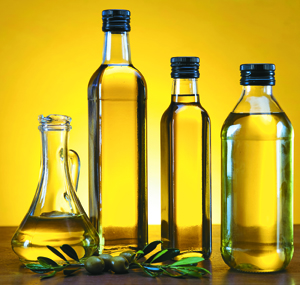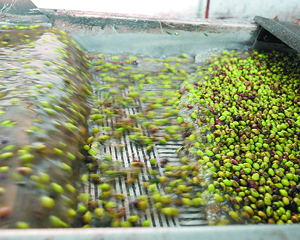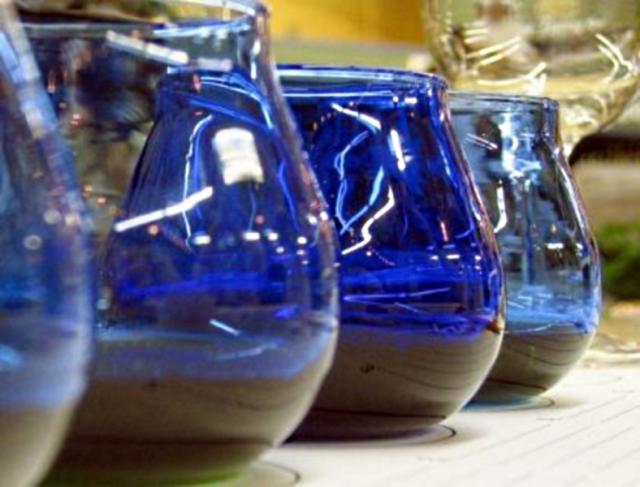Photo: To Vima
The beneficial properties of olive oil have been widely popularized for years. However, many of us wonder what makes olive oil so special. Its taste is more elegant than that of sunflower oil but what useful substances make olive oil valuable and useful for health is still a mystery for the average consumer
Vassilis Fradzolas is the guru of olive oil in Athens. He graduated in Food Policy at London School of Economics, he is known as an international taster and advisor to olive oil producing companies. He hosts private workshops related to the production of olive oil and reveals to new entrepreneurs the secrets of the production process and the quality of Greek olive oil. The online edition of To Vima had drawn knowledge from the source, namely Fradzolas’ seminars and GRReporter presents their essence to you.
Spain ranks first as regards olive oil production in the world with an average production of 1.2 million tons per year. 2012 proved to be extremely successful for the production of olive oil in the country as it surpassed 1.6 million tons. Experts stress that although Spanish olive oil is the most widely distributed,  its quality is not the highest. The second largest producer in the industry is Italy. Its exports are higher than its local production due to which it imports a certain amount of olive oil from third countries.
its quality is not the highest. The second largest producer in the industry is Italy. Its exports are higher than its local production due to which it imports a certain amount of olive oil from third countries.
Greece is the third largest producer of olive oil with 350 thousand tons of production. Of these, the country bottles, brands and sells about 230-250 thousand tons, and exports the remaining amount in bulk, mainly to Italy. Since the domestic industry cannot use the entire amount of olive oil produced and since it cannot be stored for more than 18 months, exports to larger producers are necessary.
Olive oil quality is divided into several categories. The highest is the quality of extra virgin olive oil, whose acidity is lower than 0.8%. If the acidity is between 0.8% and 2%, olive oil is defined as virgin. Olive oil with an acidity of more than 2% is classified as industrial.
The temperature in the processing of extra virgin olive oil should not exceed 28°C in order for it to retain all the important substances. Olive oil is rich in polyphenols, which are antioxidants. They protect the cell membranes and the DNA, preventing certain mutations that cause cancer. The main positive aspect of polyphenols is their impact on free radicals as they limit the harmful effects of oxidative stress.
If the temperature during the heat treatment of olive oil exceeds 28°C, polyphenols are more easily dissolved in the water involved in the process and are expelled with waste waters. Many producers use, during the processing process, a temperature of up to 60°C to accelerate production at the expense of quality. If olive oil is left in the mill for half an hour or longer at a temperature of between 40-60°C, a greater amount of polyphenols will be destroyed.
 Some of the biggest enemies of olive oil are sunlight and oxidation. It must be stored in proper packaging to retain its taste qualities and avoid going rancid.
Some of the biggest enemies of olive oil are sunlight and oxidation. It must be stored in proper packaging to retain its taste qualities and avoid going rancid.
A problem noted by experts is the expiry date as it is related to the date of bottling of olive oil instead of to the date of its production. This means that it is better to buy olive oil with as long a shelf life as possible to be sure that the product is good.
Half-ripe olives are the best raw material which producers can choose to make excellent olive oil that is good for the health. It is recommended that the olives are half-ripe, half-purple and hard before putting them in the press. The greatest amount of polyphenols, which are good for not only health, but also play an important role in the durability of olive oil, is concentrated beneath the skin of half-ripe olives.
If the low temperature requirement is met in the processing of half-ripe olives, the result will be olive oil that has an excellent taste and is rich in polyphenols. The higher content of polyphenols makes olive oil resistant to light, heat and oxidation. Good quality olive oil contains 200-250 mg/kg whereas excellent quality olive oil contains 250-350 mg/kg of polyphenols.
In Greece, there are several varieties of high quality olives. Koroneiki, a variety of olives from the area of Koroni in Laconia (Peloponnese), is the most common variety in the country and it offers consumers good quality, followed by the olives from Chalkidiki, Amfissa (central Greece), Maroneia (Eastern Thrace). The varieties of Lesvos, Athinon and Attiki are popular too.
At international tastings, experts from around the world assess the quality of olive oil on the basis of  three main indicators. They are bitterness, fruitiness and spiciness. Each of these properties is measured on a scale of 1 to 10, and the olive oil is served in blue glasses in order for the colour or clarity of the product to not affect the assessment of the evaluator.
three main indicators. They are bitterness, fruitiness and spiciness. Each of these properties is measured on a scale of 1 to 10, and the olive oil is served in blue glasses in order for the colour or clarity of the product to not affect the assessment of the evaluator.
One of the biggest problems in the production of olive oil in Greece is associated with the processing units. Payment in kind is still used in the production of olive oil. This means that the production units are not paid for the work - they receive a percentage of the quantity of production. For this reason, many producers increase the temperature during the production process in order to increase the amount thus worsening the quality of the product.